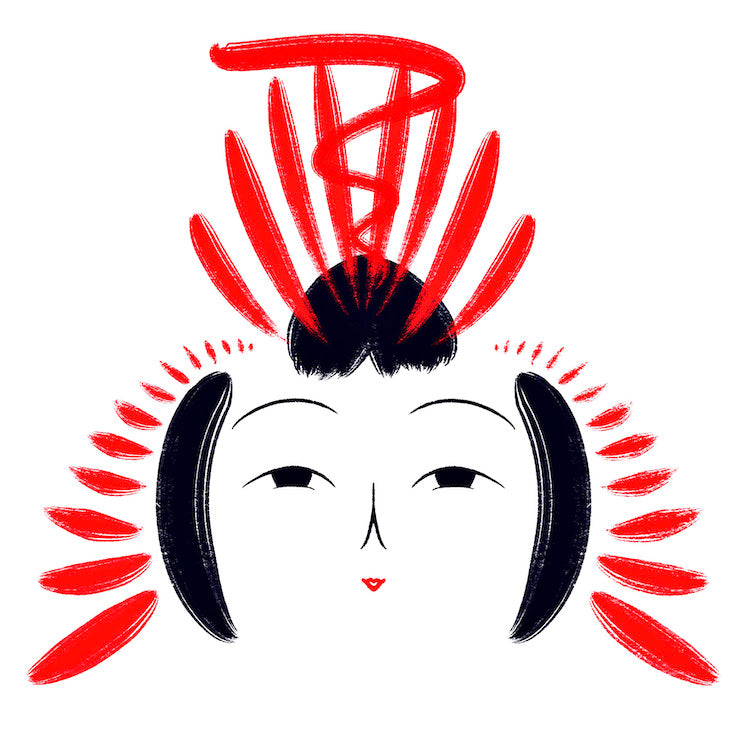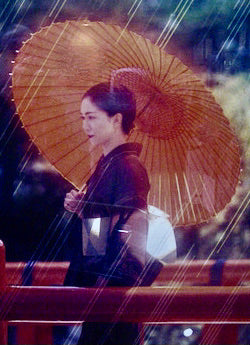The art of Sosaku, (Creative), and modern Kokeshi doll making began in the early 1940s, grew and flourished in the 1950s, and well into the 70s. This 30+ year period produced the greatest, most enduring, and most popular artists of the genre, with many of them gaining international recognition: recognition which has followed these prolific wood artists into the 21st century.
The mid-50s saw the movement go beyond the few, early doll makers of the previous decade and explode into a country-wide guild of talented wooden doll makers, all applying their artistic skills to the craft of Sosaku Kokeshi. Utilizing beautifully-grained woods available to the Kiji-shi, (wood workers), all over Japan’s northern regions, artists from backgrounds as varied as fine arts, lacquerware, painting, photography, textile design, and even chemistry and engineering, began infusing their own personalities into their work. This allowed for immediate acceptance by a much wider audience.

The images represented in Japanese Kokeshi carving typically fall into one of three categories: iconic scenes, significant themes and motifs in history and literature, and objects in everyday life, (e.g. kimono/yukata, children/baby, and seasonal grasses/flowers). While a number of these artisans did apprentice under Traditional masters, the Sosaku Kokeshi artists showed exciting variety and imagination, for the dolls produced were larger in many cases, and were certainly more elegant. Many of them were created using more than one type of wood, with the various woods comprising the clothing and hair treatments; and with the application of different methods of carving, chiseling, “harmonic chatter-work”, (Birikan’na), and wood-burning techniques, the dolls were a far different type of Kokeshi than their Traditional predecessors.

Kokeshi represent a measure of the spirit- infused status of the wood, and they are believed to retain the material’s original sacred and natural qualities. Kokeshi made in other countries, (China, Korea, etc.), are not Kokeshi, and do not represent the spirit from which they were conceived.
Japanese Motif & Kokeshi
The seasons have been celebrated in Japan for centuries, and have influenced design on all forms of art produced in that country. Kokeshi dolls are certainly no exception, as seasonal motifs and mythological subjects are carved and painted in a variety of methods on their bodies.

Through its early cultural ties with China, Japan has a long, rich tradition of poetry celebrating the seasons. Popular Haiku often appear on Kokeshi, enhancing the ornamentation of the dolls’ depiction of the season portrayed. Ume, (plum), and Sakura, (cherry), blossoms herald the arrival of Haru, (Spring). Samā, (Summer), appears in the form of Ayame, (Iris), Take, (Bamboo), and even Matsuri, (Festivals). Aki, (Autumn), adorns Kokeshi through the paintings of Momiji, (Maple Leaves), in red, orange, and yellow colors, or Kiku, (Chrysanthemum), a very important symbol of autumn throughout the country. Fuyu, (Winter), shows up as Yuki no mats (snowy pine), Mino, (snow coats), scarves, Kakumaki, (blanket wraps which is a winter shawl used to keep out the cold winter winds which in some cases almost dwarf the figure within). As much as Kokeshi represent memories, or moments in time, their ties to the four seasons are undeniable.

Note of Qualification
In our researching of artisans of the genre, we found little to no biographical data on so many of them, yet felt compelled to at least include every name we have. Therefore we show you, the reader/ collector, a partially-painted canvas on which you also might contribute to the completion of the proffered picture of this wonderful craft, so unique to Japan. We invite and welcome your input.

As Western outsiders, we relied on sources and means available to us through years of collecting, but still found great gaps in accessible data. This was often due to the fact that Japan itself has no central ‘library’. While there are several small collectives of current creative artists, they seem to function as separate groups, thus limiting what information can be obtained on non-members who represent the bulk of Sosaku Kokeshi artists.



